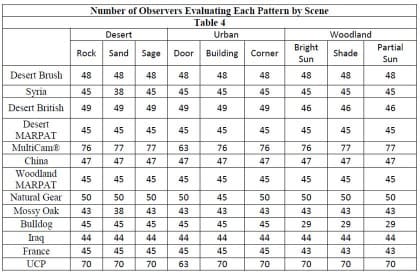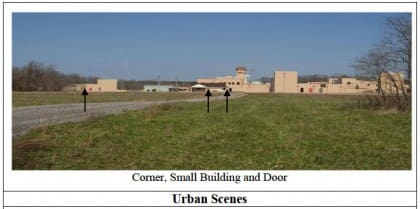Much has been made of the Photosimulation test. It is important to note that this test was not perfect and ultimately serves a data point, and not the data point. Overall, the testers did a good job but if the test was conducted again, some patterns would most likely see different results. This is due to a variety of factors which include the actual test subjects. For example, the Bulldog Mirage pattern did not have as many test samples due to a lack of Woodland environmental imagery early in the test. Instead, the test authors accepted the statistical sample as indicative of a full test and extrapolated the results.
Another issue which may have resulted the “Syrian” pattern performing better is scale. The test photo indicated that the wearer of the Syrian camo is female and this may mean that the test article was smaller than others. It may not have been detected at as great a distance as other patterns worn by larger individuals. Additionally, all of the test subjects were wearing green Advanced Combat Helmets which in some cases may have led to premature detection of the test subject rather than the actual camouflage pattern.
Another issue that probably skewed the results was that the urban environment was based on Tan colored buildings. This resulted in desert patterns performing better than they probably would have in a grey-centric environment. Conversely, patterns such as UCP and Bulldog which should have shined in an urban setting didn’t do so well.
Lessons have been learned from this round of testing and will be applied during a new round of photosimulation testing to coincide with the upcoming Afghanistan wear tests. Be sure to visit us again on Monday for an exclusive interview with COL Cole, Program Manager Soldier Protection and Individual Equipment on this testing and the development of UCP Delta.
Tags: Natick



